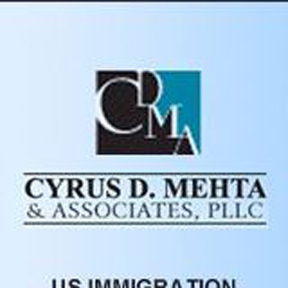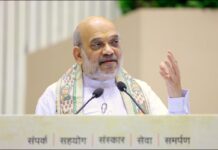 USCIS’s Fraud Detection and National Security (FDNS) Directorate has expanded its employer site visits to include review of L-1 post-adjudication petitions. Recent reports indicate that the agency is reviewing extensions of L-1 petitions and L-1 job duties and salaries to determine whether they are consistent with the L-1’s classification as an executive or manager (L-1A) or specialized knowledge worker (L-1B).
USCIS’s Fraud Detection and National Security (FDNS) Directorate has expanded its employer site visits to include review of L-1 post-adjudication petitions. Recent reports indicate that the agency is reviewing extensions of L-1 petitions and L-1 job duties and salaries to determine whether they are consistent with the L-1’s classification as an executive or manager (L-1A) or specialized knowledge worker (L-1B).
USCIS may conduct announced or unannounced site visits as part of the visa petition process. Employers have been reporting that the FDNS inspectors’ queries are similar to those made in H-1B site visits, particularly about whether wages are appropriate for the visa application, visa category, work location, hours, job duties, title, and experience of the employee. The employee may be questioned directly about his or her job duties.
FDNS’s site visits are funded by the $500 anti-fraud fee paid with H-1B and L-1 petitions. Until recently, such compliance audits have primarily involved H-1B employers. More than 17,000 such visits occurred in FY 2011, which was an increase over 2010.
USCIS’s Office of Inspector General in August recommended, among other things, that USCIS make a site visit a requirement before extending a one-year new office L-1 petition. USCIS concurred and said it expected to begin conducting post-adjudication domestic L-1 compliance site visits in FY 2014.
H-1B alert: Filing starts April 1 for next fiscal year
Congress sets a limit on the number of H-1B visas available each year. This past fiscal year, H-1B numbers were exhausted within the first five days of filing. The Alliance of Business Immigration Lawyers (ABIL) anticipates that the numbers will run out quickly again this year.
If U.S. Citizenship and Immigration Services (USCIS) receives more petitions than it can accept, it will use a lottery system to randomly select the number of petitions filed during that period to reach the numerical limit. USCIS did this last year. The agency will reject petitions that are subject to the cap but not selected, as well as petitions received after it has the necessary number of petitions needed to meet the cap.
Every time an employer hires an individual for a specialty occupation, an H-1B number must be available. (An exception arises where the individual is already with another employer in H-1B status, but this employer cannot be a university/college or a nonprofit government research organization.) When numbers run out, the employer must wait until the next fiscal year to file for an H-1B. In some cases, there may be no other nonimmigrant visa option for the individual and the individual may have to leave the U.S. or, at least, not be able to work for the employer until a year later.
While the H-1B numbers for the next fiscal year do not become available again until October 1, 2014, employers may file petitions to request numbers as early as six months in advance, beginning on April 1, 2014. That date signals the start of what has become an annual race to get petitions filed as early as possible to ensure acceptance before the cap of 85,000 visas is reached. The 85,000 cap includes the basic cap of 65,000, plus an additional 20,000 H-1B visas available to foreign nationals who have earned an advanced degree (master’s or higher) from a U.S. university.
As in past years, some foreign nationals are not subject to the H-1B cap, including individuals who already have been counted toward the cap in a previous year and have not been outside the United States subsequently for one year or more. Also, certain employers, such as universities, government-funded research organizations, and some nonprofit entities are exempt from the H-1B cap. All other employers should be aware of the H-1B cap.
ABIL encourages employers to review their hiring needs and determine whether they should initiate H-1B processing for anticipated hires, or even recent hires in other nonimmigrant status now.
• You should consider filing an H-1B petition this April if:
• You want to hire an individual who is not in H-1B status already.
• You are hiring an individual who is already in H-1B status but is currently employed with a college/university (this situation requires a new H-1B number).
• You are hiring an individual who is already in H-1B status but is with a nonprofit government research organization (this situation requires a new H-1B number).
• Your employee is in F-1 student status.
• Your employee is in L-1B status and is considering seeking legal permanent residence in the United States.
• Your employee is in another nonimmigrant status and may want to seek legal permanent residence in the United States.
ABIL recommends that clients keep their ABIL attorney (Cyrus D. Mehta, PLLC is a member of ABIL) apprised of all new hires needing H-1B status before October 1, 2014. Examples would include F-1 students hired with optional practical training that expires before April 1, 2014, or current L-1B nonimmigrants who will have spent five years in that status as of any date before October 1, 2014. Contact your ABIL attorney now if you have any questions or would like to file an H-1B petition.
Is Immigration Reform Possible in 2014?
U.S. House of Representatives Speaker John Boehner reportedly hopes to push immigration reform legislation forward in 2014, a year in which midterm elections will take place in November. He faces competing pressures: on one side are those advising that immigration reform efforts could help Republicans win the Hispanic vote; on the other side are anti-immigration conservatives and Tea Party members who would prefer no action other than enforcement.
Observers expect that Mr. Boehner will act piece-by-piece rather than trying to advance one comprehensive immigration reform bill. He may wait until after Republican primaries occur this spring. “There are a lot of private conversations underway to try to figure out how do we best move on a common-sense, step-by-step basis to address this,” he said. At a recent news conference, he noted, “The only way to make sure immigration reform works this time is to address these complicated issues one step at a time.”
Meanwhile, Thomas Donohue, the president and CEO of the U.S. Chamber of Commerce, said in his “State of American Business 2014” remarks on January 8, 2014, that “the pundits will tell you it’s going to be hard to accomplish much of anything in an election year. We hope to turn that assumption on its ear by turning the upcoming elections into a motivator for change. It’s based on a simple theory-if you can’t make them see the light, then at least make them feel some heat.” Speaking generally on immigration issues, he added, “We’re determined to make 2014 the year that immigration reform is finally enacted. The Chamber will pull out all the stops-through grassroots lobbying, communications, politics, and partnerships with unions, faith organizations, law enforcement and others-to get it done.”
The big question is whether immigration reform legislation can move forward in a midterm election year in which all 435 House seats are up for grabs, along with 33 of the 100 Senate seats, 38 state and territorial governorships, and numerous state and local elections. Given recent hyper-partisan experience in Congress, some say continued gridlock is likely. “I can’t imagine Congress doing much more than nominations and appropriations bills,” said Jim Manley, a former aide to Senate Majority Leader Harry Reid (D-Nev.). However, major legislation has passed in election years, often after primary season. “For many members [of the House], they’d be more comfortable when their primaries are over,” said California Rep. Darrell Issa.
Visa Bulletin Shows Advancement in Several Categories
The Department of State’s Visa Bulletin for February 2014 shows advancement in priority dates for several employment-based categories.
The employment-based third preference “Worldwide” and “Other Workers” categories both advanced two months, from April 1, 2012, to June 1, 2012. The China-mainland born employment-based second preference category moved ahead one month, from December 8, 2008, to January 8, 2009. The India second preference stayed put at November 15, 2004, as did Mexico and the Philippines, which both remained Current for the second preference. The employment-based third preference “Other Workers” category moved ahead by two months for every category except India, which remained at September 1, 2003. Other categories remained Current.
Cyrus D. Mehta





